Part One of Four
I have now started and finished fourteen 1,000 mile sled dog races. Each one has been intensely personal, different and satisfying.
No race has ever been the same.
One-thousand miles across the Alaskan wilderness are never the same.
My dog team is never the same.
My own personal Iditarod outlook is never the same. The Trail
The Trail
One-thousand miles is a long way. Year after year, the Iditarod trail is mostly the same route. But, year after year, it is never the same. The hazards, the weather and the luck vary as much as night and day.This year, the trail was an extremely well groomed Alaskan highway. Mother Nature also seemed to bless this race with ideal weather conditions. By no means, should these facts belittle the difficulty of this year’s race. In fact, ideal conditions such as these, created a race that was even more competitive. Most of the “winning caliber” teams could contend with the easier conditions and were therefore, very aggressive to the finish. And this was evident by the incredibly competitive race and a new Iditarod record setting champion: John Baker and his Kotzebue trained dog team.In this year of record setting finishes, I also celebrated a personal best. This was my fastest finish time (9 days 10 hours 22 minutes) and a tie for my best place (11th). But, my greatest achievement was, by far, something else.
The Dogs
My dogs continue to amaze me. You would think that in fourteen years of racing, I would have the Alaskan Husky sled dog figured out and have written a book about the subject. I haven’t.Most of all what continues to inspire me is the individuality of each dog. Yes, I do race them as a team. But, in order to get the most from the team, I need to get the most from each individual.My dog team has evolved over the years. As it should. But, the dogs are still born and raised at SP Kennel. In most cases, we have their parents at the kennel and in some cases, their grand parents. Siblings, half siblings and cousins make up the team. They are literally, a family of dogs, in the SP Kennel dog yard. They are my family. I want to win Iditarod, but I want to win it with my dogs, my family.As I looked at the SP K Iditarod 2011 team line-up, I saw a huge transformation from years past. Neither SP K “Super Star”, Cha Cha or Bullet, were on my team. If you had followed the team at all in the last 5 years, you would know that these dogs were my strength and mainstays. Cha Cha as my “commander in chief” and Bullet as my “sergeant-at-arms”. This year, I purposely left these dogs off the roster. That was very hard because they were both healthy and ready to race. But, I had to face the harsh truth: dogs age quicker than humans. These two were now 50 to 60 years old (in human terms). So, the question was: who was to take their place?There were nine returning veterans with multiple Iditarod finishes: Beemer, Biscuit, Bonita, Butterscotch, Meg, Rose, Snickers, Tony and Tatfish. At the start, their average age was 5.6 years old and average number of Iditarod races was 3.5 races each.There were seven less experienced dogs: Boondocks, Olivia, Nacho, Quito, Scout, Tug and Willie. Olivia, Nacho and Quito had seen Iditarod before, but never made it to the finish line. The other four were true rookies and had never even seen the race. The average age was only 3 years old.There was an entirely different dynamic that effected my Iditarod team this year. Fourteen of the SP K dogs ran in the 1,000 mile Yukon Quest with Allen in February – finishing only 16 days before the Iditarod start. So, the big question was how would another 1,000 mile race effect them? The nine Yukon Quest dogs on my Iditarod team were: Beemer, Biscuit, Boondocks, Meg, Olivia, Nacho, Quito, Rose and Scout.So, there were a few dog questions in the forefront of my mind at the race start. I knew that I had a great team, but I wasn’t sure who my “commander in chief” or “sergeant-at-arms” would be.
The SP Kennel 2011 IditarodStarting line up was:Quito (leader) – Scout (leader)Tony – ButterscotchNutmeg – SnickersRose – NachoOlivia – WillieBeemer – BoondocksBonita – Biscuit Tug – Tatfish
Attitude
My Iditarod outlook this year was extremely positive. With this dog team and my knowledge, I had a realistic chance at a “Top Ten” performance. I just had to read the team correctly and put the right dogs in the right positions at the right time. Easy! Right??? In my mind, there was really nothing more that I could have done to prepare the dogs for this event. That is a refreshing feeling!On the other hand, personally, I was not as fit as I would have liked. My work out days had been bumped in the last few weeks for SP Kennel office work and Yukon Quest/Iditarod logistics. The preliminary racing season had left me as a hardened, smart and tough; although a little weary; musher. So, I came into this year’s race with the thought that I shouldn’t push myself too hard for the first half of the race and then I would “go all out”.Overall, I was excited and happy at the start. Not nervous. I knew that a lot of questions would be answered over the next 1,000 miles. Let’s have fun!
The Start
The Ceremonial Start went off with out a hitch. SP K Pit Crew was spectacular and kept the dogs and mushers relatively happy and “under control” for the three long days in Anchorage before the event.I used to dread those pre-race days in Anchorage. But now, the dogs and mushers are comfortable at the Clarion Suites hotel – only blocks from the Iditarod starting line. And this year, so many of our SP K supporters and Dog Sponsors were able to chat with us, as well as visit with the dogs. Truly, this locale seems imperative to our race now. We even spent the Friday before the start casually visiting our Anchorage based sponsors and even brought some of the dogs to a Horizon Lines office gathering.Since Saturday’s start was such a pleasure, a smile was still on my face as I left the restart line in Willow on Sunday. It was a clear and sunny afternoon with temperatures in the mid 20’s. Warm for our Interior Alaskan huskys, but the wind was present on the frozen river and it cooled the dogs.I took a deep breath as the team rolled out along the Iditarod trail, farther and farther away from civilization. Although the Iditarod hype is fun, it is nice to finally get away from it all and be one with the dogs.I had decided on Quito and Scout as leaders at first. I had counted on Scout in several shorter races during the pre season and Allen had him on the Yukon Quest. He is a smaller fellah who is not overly assertive, but is extremely steady. He had a shoulder cramp about half way through the Yukon Quest, so he was dropped from the team. He had plenty of massage therapy and this seemed to do the trick because he was now happy as a lark leading the team down a trail that he had never seen in his life! Quito was the spunky part of this duo. She has little patience and really just wants to run. We decided only this season that she was someone that we should count on in lead. She ran some of the Yukon Quest in that position and after that, became truly confident. I liked this pair up in front because nothing seemed to stress them out.I could tell from the beginning that the race pace was fast. But, still I tried very hard to contain the speed of my team. This is challenging when some of our competitors are steaming by us at break neck speeds. I was sure that some of these mushers would regret that later in the race.Iditarod is a game of chess. Mushers are constantly setting up their teams for the next move or the next several moves. So, in the beginning of this year’s race, I used the dog’s pent up energies and added their “starting line” adrenaline to push through the first two checkpoints, YENTNA and SKWENTNA. We found a peaceful camp spot farther down the trail.Most mushers stop in checkpoints, so I found myself all alone in the forested hills on the first night of the race. There looked as if there had been quite a bit of snow machine traffic here in the not-to-distant past. There were several turns that I had to negotiate quickly or wind up on the wrong trail. On one of these, I purposely “gee’ed” the team to the right and found us a camp spot 40 feet off of the trail. I always camp my team as far off the trail as possible. It is one of my pet peeves to see musher’s camp their dogs right along side the trail. I know that they must not camp often because if they did their dogs would never rest. A resting team hates to watch another team motor right by them as they try to settle down. So, I was pleased with our spot.All the dogs looked good and laid in the straw that I had carried for them. I even leveled a little bed for myself behind Tatfish and Tug. After feeding the crew, I laid down in my sleeping bag for 45 minutes. It is smart to rest your muscles even if you don’t actually sleep. Dog teams began to pass us in a steady stream. It was dark, but I could identify a few teams by their leaders, their sleds or their greetings. I got very little rest after that because three different teams negotiated the turns incorrectly and wound up running right through my camp. One musher even yelled “Boy, that’s a bad place to camp!” as his dogs tromped through my team’s straw beds. That will get you out of your sleeping bag in a hurry! I explained that the trail was way off to his left and he had missed the trail! Awkwardly, he asked me to lead his dogs back to the main trail – apparently they don’t take commands? But, I knew the quicker that I got his team back on the trail the better for my now awake and barking squad, so I grabbed his swing dogs and pulled them into deep powder. They jumped in and out and rolled me through the snow like a rag doll. I got up, brushed myself off and walked back to his sled which was parked beside my leaders. I grabbed his sled and told him that he could go wrestle with his leaders. He managed to drag the outfit over to the existing and trail and I drove his sled. It was all very chaotic in the middle of the night. The minus was that our rest had been abbreviated, but the plus was that we now had a path to follow back to the trail.The sun was rising as we went further north and west on the trail. FINGER LAKE was the next checkpoint that came into view. The trail had been spectacular. Even the loop that skirted around the lake was hard packed this year. Wow. Iditarod was a race track! So, we had little trouble coming and going through the checkpoint. The team was refreshed from their previous rest and ready to roll. As I went through, I took a quick count of teams that arrived ahead of me…. quite a few!The next section of trail is notorious because of the Happy River Steps. Years back there was actually a sign on a tree that warned you of the forthcoming hazard, but these days you must rely on your memory. My memory served me well this afternoon because I slowed the team just prior to the first “step” – a 30 foot vertical drop in 100 foot of trail. The trail hugs the side of a steep bank here and you hope that your team hugs the bank too. My team had bunched up a little due to the fact that my sled went faster down hill than my dogs, so I stopped at the bottom of this “step” to let Quito untangle her hind leg. She did this quickly and we resumed. The trail then sweeps in a 180 degree turn and drops down the second “step” – another 30 vertical foot drop in the other direction. This one was better, so I slowed the team again and talked to them. I saw the last “step” from a distance and something looked wrong. The trail made an “S” curve and curled around a huge tree into the last “step” – a final 30 foot vertical drop – straight down! Quickly, I had to get off my sled brake or that action would pull the entire team up and over the tree. So, I let up the brake, the team sped up, we whizzed through the “S” curve, around the tree and plunged over the last “step”. The sled soared and upon landing it caught up to my team again. The whole squad looked back. I got my footing and stopped as soon as I could. Everyone came through it a little tangled but unscathed – but golly that last one was a doozy!The trail meanders out onto the Happy River just after these pitfalls. I passed Judy Currier camping on the river bed and she yelled at me, “I crashed!” I would learn later that many dog teams had trouble here. Michelle Phillips was tossed over the first precipice and she struggled for hours to get her sled back up to the trail. Finally, she unharnessed her dogs and unloaded her sled to manage the affair. But, that wasn’t the worst of it. Rick Swenson broke his collar bone in a crash after the third “step”. Considering all this…. we had a great run!
The Alaska Range
My team trotted along in the morning hours. The team worked well, especially a few core team dogs: Rose, Meg, Bonita and Nacho. I looked at Butterscotch and Tony, who were right behind the leaders charging along. They are a nice brother tandem to watch. They both have extensive race experience (five-time Iditarod racers) and are the oldest team members. Sometimes they take their performances to the extreme. Butterscotch, in particular, gives nothing less than 100% effort all of the time. His work ethic is amazing especially considering he knows he’s got 1,000 miles to go! Tony is just a big lug who works too hard. I worried about them as the younger, spritely leaders zipped through the tree line. I made a tactical change and switched Butterscotch for Scout thinking perhaps he would ease up a little if he did not have to play “catch up” to the leaders all the time.It was gorgeous here in the middle of the Alaska Range. The rocky snow laden peaks soared thousands of feet into the air, pressed against a baby blue sky. For the last few hours before RAINY PASS checkpoint, we meandered through the mountains. Then we popped out of the trees on to a large alpine lake. At the end of the lake, I could see a busy scene.I had heard airplanes overhead most of the morning. When the weather is good, RAINY PASS is probably the most popular spectator checkpoint on the entire trail. Therefore, I had anticipated this hubbub, so I was not shocked to see dozens of ski planes and fans lining the entry chute. This, of course, excites the dogs and they rushed over to their designated sleeping spot.It was just after noon and I was pleased with our trail speed. I looked around and counted seven dog teams who were there before I had arrived. But, the “leap frog” that now starts as mushers play their Iditarod chess games was in full swing. I watched Robert Bundtzen guide his dog team in and immediately out of the checkpoint. He was the first team to leave and would now be almost 5 hours ahead of me. That’s a lot!I did my dog chores as efficiently as possible in a busy place like this. Spectators were excited to be there and so I tried to answer a few questions as well. I even spotted some familiar faces in the crowd and talked a little about the first 24 hours of the race.The team appreciated their rest in the sunshine. Tatfish, who was in wheel, took a long time to lay down, but as the token “whirling dervish” on the team, I expected that. I did wrap a few wrists, mostly for precautionary reasons, and put shoulder warmers on select dogs.Teams continued to motor in and out of the checkpoint. I looked up from repacking my sled and saw some familiar furry faces running towards me. In just seconds, Allen was parked parallel to my team. How fun to have the whole SP Kennel together! We spoke mostly about dogs and the trail – typical husband and wife conversation!There was a mushers’ sleeping cabin several hundred yards from the dogs, so I hauled personal items there and choose an open bunk near the door. There were only a few mushers asleep. Sebastian Schnuelle was preparing to leave and so we chatted. He was not happy about his run so far. He thought that it was too fast. I told him that I was right on my schedule and my next run would put me in a perfect spot to camp near an open creek. He was intrigued by that, so he asked me where exactly that was. When you camp a lot, as I do, you tend to remember where all the “good spots” are located. So, as he walked out of the cabin, I expected to see him later that night. The cabin was perfect for a short nap.Upon waking, I changed my socks and nibbled on a few snacks. I felt great as I walked out to the team. It was still daylight and many of the spectators and airplanes were still there. It looked rather challenging actually to mush a long team of sled dogs in and out of these moving, motoring, loud flying machines. But then, I watched a beautiful team of black huskys trot up the edge of the resting area, zigging and zagging perfectly at the mushers commands. The team deliberately turned this way and that, casually avoiding every obstacle. It was quite impressive! It was Team Baker.I packed up and left. We trotted through the chaos – a stone’s throw from several airplanes. I hoped that no arctic hares took this moment to zig in front of the team and consequentially ruin a $250,000 machine!As the trail leaves RAINY PASS checkpoint it climbs up above the tree line and into the higher alpine elevations. We were not moving at a break neck speed, but we were steady. The daylight was waning, but the moon was positioned just over the mountain tops and lit up the sky. I was content.In an hour or so, Tatfish started to look perturbed. I watched him closely and he was continually looking back. I peered behind us and saw his concern. There was a dog team closing in on us. I peered back often and finally stopped my team on a wide section of trail so the team could pass. It was Swenson. Geez, I guess a broken collar bone is not going to slow this Iditarod Champion down! I’ll have to admit, his passing me with this condition and two less dogs on his team, did burst my bubble a little bit! But, we trailed him for the next 45 minutes as we summited the pass.The trail down the mountain and into the gorge was a normal roller coaster. I yanked my sled this way and that and couldn’t help but think about Swenson doing all of this with a broken collar bone. We made our way.I starting looking at my leaders and thought that I should change out Butterscotch. He hadn’t eased up at all, so perhaps I should move him back in the team. I looked through the squad and analyzed. I was “saving” Snickers for when we slowed the pace a little. He is a super tough dog, but he struggled with top end speed. He only has two gaits: a pace and a canter. He physically can not trot. He never has been able. He’d make a pretty cart horse who has to pace and lift its legs high off the ground, but his gait limited him as a sled dog. I thought about Beemer, who lead me in two earlier races this season. But, he was dropped from the Yukon Quest team because he seemed tired. A day later we found that he had an infected tooth and that he might not have been tired at all! But, I didn’t want to press him until necessary. Biscuit could run in lead, but I was hoping to “save” him for when I really needed him in a storm or tough trail. Olivia was a possibility, Rose was a possibility and Bonita. I hadn’t run Bonita in lead much at all, but she looked great now. I decided that I would put her up front with her sister, Quito, as soon as the trail flattened out.Ten minutes later Bonita started limping!That type of scenario has happened to me more than once. I think about how great a team member looks and BAM! they get injured. I can’t really explain that. But, now, I had my first real issue of the race.I stopped the team on one of the few safe sections of trail during the decent from the pass before the Dalzell Gorge. It is not a good idea to stop anywhere in this section because it is truly a roller coaster ride. If a dog team comes up behind you they will run you over without ever seeing you. The teams are traveling at high speeds down steep slopes and ridges with consecutive 180 degree turns around rocks, bushes and occasional open water holes. I ran up to Bonita and took off her boots and looked at her paws. I saw no obvious injury. I quickly felt her wrists and shoulders and she said nothing. I couldn’t find a thing wrong. She looked at me and started screaming to go. So, I rushed back to my sled and grabbed the handle bar before the team pulled the hook. A sixteen dog team facing downhill on a steep grade has an amazing amount of power.The next few miles were very squirrelly in the Dalzell Gorge. The gorge is actually a river bed that runs through a walled canyon. The river freezes in some sections and the trail will traverse these sections. But, other sections of the river do not freeze, so the trail breakers will either build ice bridges or the trail must go around. The only way to go around is to scale the walls of the canyon, run along the top, and then plunge back down into the canyon where the river is frozen. Sound crazy enough?I slowed the team the best that I could and watched Bonita. She was one up from wheel running in tandem with Biscuit. He is a bigger dog and when he needed her to move to one side or the other of the trail, she knew it! I again saw her favor a front leg. It was a long few minutes until I could stop again with out crashing. I loaded her in the rear of my sled where I can make a small dog bed out of blankets and then I carried her into the ROHN checkpoint.The plan was to resupply in ROHN and continue on several hours to camp at the open creek. But, I needed to take some time to look at Bonita. So I pulled into the checkpoint and asked to park in a temporary spot. They pulled me in right next to Jessie Royer who was packing to leave. Jessie and I have raced together often over the years. She was in a different situation this season because she had agreed to let Sebastian race her best veterans dogs in exchange for him footing the bill for her Iditarod. So, she had a mixed group of Sebastian’s dogs and hers. I recognized very few.A group of veterinarians approached the team. They play an important role in the race. No musher wants to hurt a dog … ever. Number one: we like our dogs. But also, the health, attitude and welfare of a dog is directly related to how well it works in harness. So, injuries are a big deal – to dogs, mushers and veterinarians.Sometimes a musher will identify an injury right away: ie: “Oddball stepped in a moose hole and broke his toe.” But, other times we don’t know exactly what is wrong, we just know that the dog doesn’t seem “right”. That is where science steps in. The Iditarod veterinarians are taught to look at heart, hydration, attitude, weight and lungs. They help a musher make a decision to drop a dog from the team or not. They also make notes on that dog in our official Vet Book that travels down the trail with the team. Any dogs of concern will be attentively followed by the whole Iditarod Vet staff.So, my current worry was Bonita. As soon as I unloaded her from the sled her injury was obvious. Her wrist was swollen. She must have stepped in a hole or twisted her paw. After all of those foot steps over all of those miles, anything could happen. In some circumstances a dog can run on a sore foot – just like a person can hike with a blister or a stubbed toe. But, at this point in the race, when Bonita was clearly favoring her foot and it was now swollen, I thought she needed to be flown home. As I made this decision the veterinarian nodded and proceeded to make notations in my Vet Book and fill out the Dropped Dog Paperwork. Even though we are in the thick of competition, there is protocol to follow concerning a dropped dog. The paperwork follows the dog as it is flown back to Anchorage and to the SP K Pit Crew. As soon as the paperwork is completed, the dog is no longer part of the team and it can legally receive any medications that might be illegal in racing dogs: such as aspirin or Rimadyl. I was sorry to see Bonita leave!Now I had to focus on repacking my sled for the next run and camp. I had a mental list to go through before leaving the checkpoint and 1, 2, 3…. I was ready to roll. I had spent longer at this checkpoint than I really wanted to, but for Bonita’s sake, I could write it off.
Heading West
We left the trees and dropped down onto the icy river bed. The trail parallels the South Fork of the Kuskokwim for 20 miles. It only travels on the river ice for a rough 1/2 mile-mushing over gravel bars, log jams and drift wood for a short spell. We held it together and moved up the trail.After I dropped Bonita, I had a small mental hurdle to get over. I was bummed that she got hurt. I was upset that I had to drop her. It bothered me that the team was now one dog short. And I was worried that someone else would now get injured. I would “Ohhh” and “Ahhhh” as the team rounded sharp curves and jumped over ridiculous obstacles. There is always a low point in my race and it was right now. I was tired. I had a belly ache.But, the trail continued, as did my team. And as the miles passed, so did the frustration. We entered into a newly burned area that the Race Marshal had warned us about. A lightening caused wild fire burned a huge section of land this past summer and the remnants of the trees were either black stubs or downed logs. I could smell the fire and ash. The trail was different from years past when we had mushed along a skinny trail surround by dense trees and shrubs. It was wide open and literally, vast.The Post River glacier even snuck up on me because the traditional route was unrecognizable. And funny enough, the team had no issues climbing up the right hand side of the glacier, skirting deliberately over to the left and over the top to dry land. We were motoring. How could I not have a smile on my face?I started to look at my watch in order to calculate my run/rest ratio. When we came to our camp spot I wanted to know how long we had been traveling, stopped or actually resting. I rounded a few bends and knew that the creek was close. One more bend and I saw a headlight in the distance. It looked at me and I could tell that the musher was stopped tending to dogs. I passed that team and saw another team tucked in to the right. Sebastian. I looked at the lay of the land and saw the only spot for another team was straight ahead just before the trail tucked back into the trees. So, I asked the dogs to line out “haw” and they lunged because they knew what I was asking. I tried to put the snow hook in to stop their excited progression, but the ground was actually solid ice. We were all camping on the frozen overflow ice from the creek. Probably not the warmest spot to choose. I flipped my sled over to act as an anchor and tried to walk up the team to straighten everyone out. I immediately flipped on my butt with no traction on the ice. Yikes. So, I carefully moved the whole team up farther where there were occasional tuffs of grass poking up through the sheet of ice. I knew that both myself and the dogs could get foot traction now. So, we all settled in for a rest.I walked back to the actual creek bed, past a snoring Sebastian. Jessie was tending to the team of dogs parked just parallel to his team. I chatted with her while filling my pot with water. Having a source of “running water” at a camp spot is invaluable. I would be able to make their hot meal in less than 15 minutes and then I could give them a warm watery broth just before we depart. So, my chores took less time then I had anticipated and I was able to settle down for a nap.I tried to construct a spot to lay down that was insulated from the ice underneath. I cut some spruce tree branches and laid them under my lightweight foam sleeping pad. I then put my down sleeping bag inside my bivy sack. The bivy sack is mostly to keep my bag dry, but I thought any extra insulation would certainly help. I took off my boots and parka and climbed inside. I laid the parka over my upper half with the hooded ruff circling my head. It was a nice little cocoon.I laid inside with my headlight turned on. I set my alarm and snuck it into my hat on top of my ear. I nibbled on a granola bar and relaxed. I couldn’t fall asleep right away because my dogs started to bark. The game of “leap frog” had resumed. Sebastian was packing up his sled. After he left, there was a constant progression of dog teams passing our camp spot. I did eventually nap for a short spell because I woke up with my right hip frozen solid. I had slid off of my bed and had been laying directly on the ice. Whew! I had to get up and jog a few paces to unthaw.Allen had pulled into the spot that Sebastian had just vacated. Jessie was still there. I brothed the squad, rubbed everyone down – especially Tony who moaned loudly as I rubbed his paws. Everyone loves a foot massage!We got back on the trail about 6 AM as daylight began to emerge. Our run across the flats was not as smooth as I had hoped. I stopped the team periodically to check on various dogs. Snickers was not 100%. He didn’t seem excited or enthusiastic. His right paw was a little puffy. He had the same condition last year during the race and I wondered if the Iditarod was too much for him. The front of the team looked great however. Quito was still charging in lead with Scout. I had moved Olivia and Nacho right behind them. Olivia was spunky and Nacho never seemed to get tired. I kept Tony and Butterscotch together and Nutmeg was running by herself.The fifty miles into NIKOLAI seemed tedious. The terrain was flat and uninteresting although I did spot Mt. McKinley towering in the distance. In order to break up the monotony, I started to snack the dogs with small salmon steaks. They really seemed to love that. So, I made that a habit and a reward for the team every hour on the hour. Pretty soon I was out of salmon and we were trotting up the river bank at NIKOLAI.My mother, Mickey, has tried for years to get out onto the Iditarod to see me and the dogs. Despite her past efforts, this had never worked out. This year, she was determined. She had a full blown schedule and even a few “back up plans”. As we skipped up the bank at the checkpoint, I spotted my mom.It was a gorgeous bright blue sky day. This race was moving fast. On a normal paced year, I tried to arrive in NIKOLAI before 2 PM, it was noon and I was by no means the first musher to arrive. Martin Buser and Robert Bundzten had been there for nearly 4 hours and were both preparing to leave as I fed my team. I did not get a good look at either team as they left the checkpoint because, by then, nearly twenty teams were parked between us and them. It was getting crowded.My camp spot was perfect for my team. We were right beside the huge barrel of hot water and directly in the sunshine. The dogs ate and then napped with the sun beating down on their bellies. I walked Snickers around. He was not sound. When I pressed his foot he didn’t like it. I rubbed him with liniment and wrapped it with a compression bandage. I repacked my sled bag, cleaned up my area and walked up to the checkpoint building with my mom. We passed John Baker and Paul Gebhardt walking towards their teams. I jokingly asked them “John, how do your big black dogs like this heat? Paul, how do your big red dogs like this heat?” Each man just grimaced at me and kept walking. I did not know that Paul’s team was actually cramping up in the heat and he would scratch from the race only hours later.It was fun to be able to chat with my mom. Most years I have called home from here because there is a telephone right inside the front door. But this year, home had come to me. I told her all about Bonita and leaving her behind at ROHN. I told her about the trail conditions and how it seemed to be a fast race. I talked about Allen and how his dogs seemed to be gelling as well.NIKOLAI is a nice place to take a breather. I was comfortable. The dogs were comfortable. It was time to sort out the first part of my race. My chess game. The one thing that I was sure about is that we had only just begun this 1,000 mile marathon – 250 miles completed and over 750 to go …. we had a long way to go!


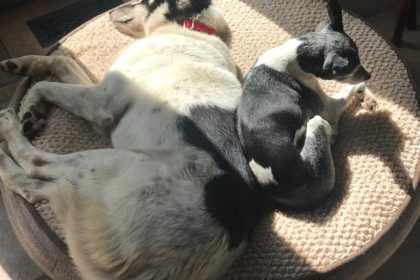



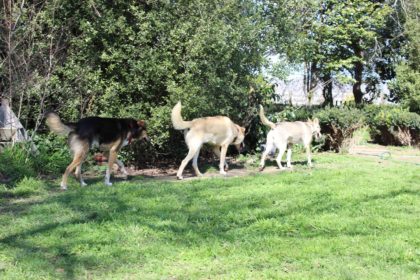
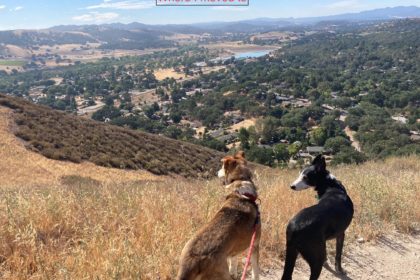
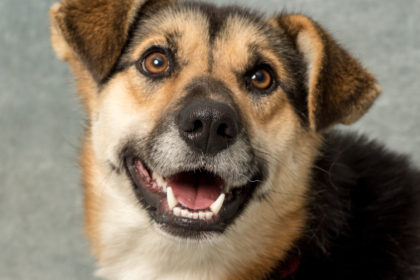
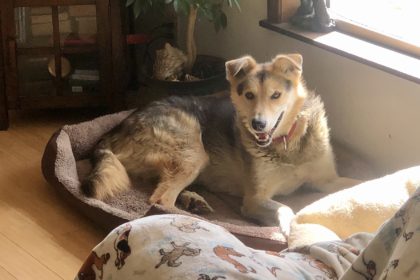
Aliy, You are a great musher but also a wonderful writer. Thanks for taking the time.
JQ
Indigo will be beside herself when she reads this tomorrow. Our autumn has been wet and windy, but it is only just starting to get cold (and certainly not 'Alaska" cold). Hope you are getting out to enjoy your spring/summer ….writing up these fantastic trail notes must have kept you inside for many hours!
Always glad to see your notes and get the SPK race story in detail.
Always amazing. Julie
Awesome notes to read Aliy…you really paint the picture well!
It has been a long wait for these trail notes but as always they are worth the wait. I feel as though I am out on the trail with you. Thanks for the memories!
My year is now reaching completion. There are no words that can express how much you taking the time to do these means to me. Thank you!!!!
I was definitely showing signs of sled dog race withdrawal – morose as it rained, missed Aliy and the dogs, wishing it would snow (that is sick!).
Ahhh – the sun is shining, so I am once again content with summer and …. this was definitely worth waiting for.
Hi Aliy,
Thanks for taking the time to write about your race. I admit that I have checked your dogblog almost every week to see if you posted anything. This was a real treat. I love seeing the race through a musher's eyes, especially in the way you tell it.
We just returned from Lassen Nat'l Park. They are still trying to dig out the roads from all the winter snow. One campground is under 9 feet of snow. I would have expected this situation from some place in Alaska, not California.
Hope all is going well.
Thank you for sharing your story. You make it feel like we are with you every step of the way.
Thank you.
Hi Aliy,
Just glanced at the roster for the next Iditarod. I didn't see Allen's name on it, and was wondering if this means he will be concentrating on the Yukon Quest instead.
Looking forward to your next installment…
Aliy! Tactical question…for time management purposes, would it be easier to place your relief leaders in the swing or row three team positions? Or is it more beneficial to give them a physical and mental 'rest' placing them farther back on the line? Example: Scout needs a break, you have Biscuit on swing, woop! quick exchange…
Just logged on for the first time summer and this is great read on a hot summer night here in the midwest!!
Cindy, Libby and Hank
Thanks alot for the epic stories from Alaska. For someone like me, that dreams anbout running the Iditarod one day, its a great way to learn about the event.
All the camping you and the team do along the trail is very interesting and I would like to do more of this in the training of my team this year. You write that you can bed down almost anywere. It would be very interesting to learn more about how you camp in the cold and what type of gear you use for the dogs and your self to keep warm and safe in training and races.
What a great story – Thanks for making it public
Tony
I am following the Iditarod for the first time this year. You have really impressed on me what the race means and how well you run it and take care of your team. I am so proud of your finish in 2012 and now I'm reading your notes from last year. What a great way for an outsider to know more of what this is all about. Thank you Aliy!